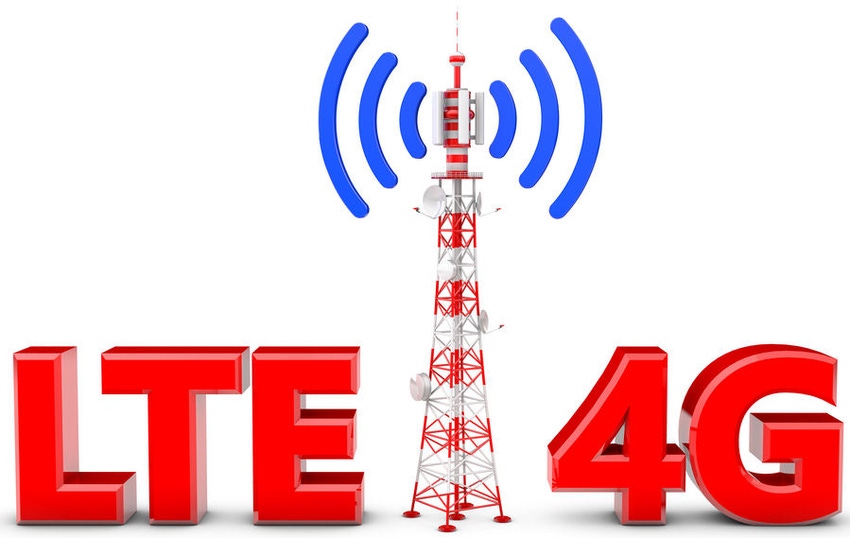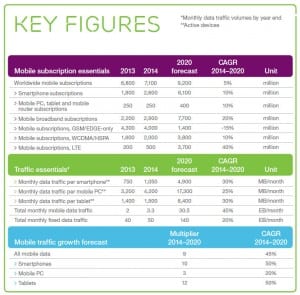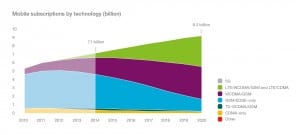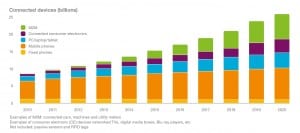Networks giant Ericsson has published its latest Mobility Report, in which it forecasts massive LTE subscriber growth over the next five years, as well as an IoT explosion.
June 3, 2015

Networks giant Ericsson has published its latest Mobility Report, in which it forecasts massive LTE subscriber growth over the next five years, as well as an IoT explosion.
Ericsson measures traffic from over 100 networks around the world and collates this data in its quarterly report. Inevitably there is a lot of data, much of which Ericsson extrapolates into forecasts, and it offers a regular barometer of how things are going in the comms world.
Among the headline numbers were the forecast that 70% of the global population will be using smartphones by 2020, resulting in a doubling of global smartphone subscriptions in that period. This trend, as with most in the report, will be primarily due to growth in developing regions such as APAC and Africa, where there is still a lot of latent demand.

Developing countries are also the main drivers of current overall mobile subscriber growth, with India alone accounting for a quarter of the 108 million new subscribers in Q1 2015. China is second on 8 million, but is a more mature mobile market than India. A surprising third is Myanmar with 5 million adds, which represented around 10% of the total population.

While LTE is already a reality in many developed markets, it’s still in its relative infancy globally. Ericsson says there were around 500 million LTE subscriptions in 2014, but expects this to leap to 3.7 billion by 2020. Even then LTE will still account for the minority of a forecast 9.2 billion total mobile subscriptions (note an individual can have more than one subscription) in 2020. Note Ericsson expects there to already be a small number of 5G subscriptions by 2020.

One other interesting nugget was Ericsson’s forecast for the growth of IoT devices. While fixed-line phones are in slow decline and little growth is expected from phones, tablets and PCs, Ericsson is expecting connected consumer electronics and especially M2M devices such as smart meters and connected cars to increase rapidly and account for a far greater proportion of connected devices in 2020 than they do now. Finally, all this increased activity is expected to lead mobile data traffic to increase 13x between 2014 and 2020.

“This immense growth in advanced mobile technology and data usage, driven by a surge in mobile connectivity and smartphone uptake, will make today’s big data revolution feel like the arrival of a floppy disk,” said Rima Qureshi, Chief Strategy Officer at Ericsson. “We see the potential for mass-scale transformation, bringing a wealth of opportunities for telecom operators and others to capture new revenue streams. But it also requires greater focus on cost efficient delivery and openness to new business models to compete and remain effective.”
Visit the world’s leading LTE conference and exhibition – LTE World Summit 2015 – in Amsterdam

About the Author(s)
You May Also Like








.png?width=300&auto=webp&quality=80&disable=upscale)


_1.jpg?width=300&auto=webp&quality=80&disable=upscale)


.png?width=800&auto=webp&quality=80&disable=upscale)